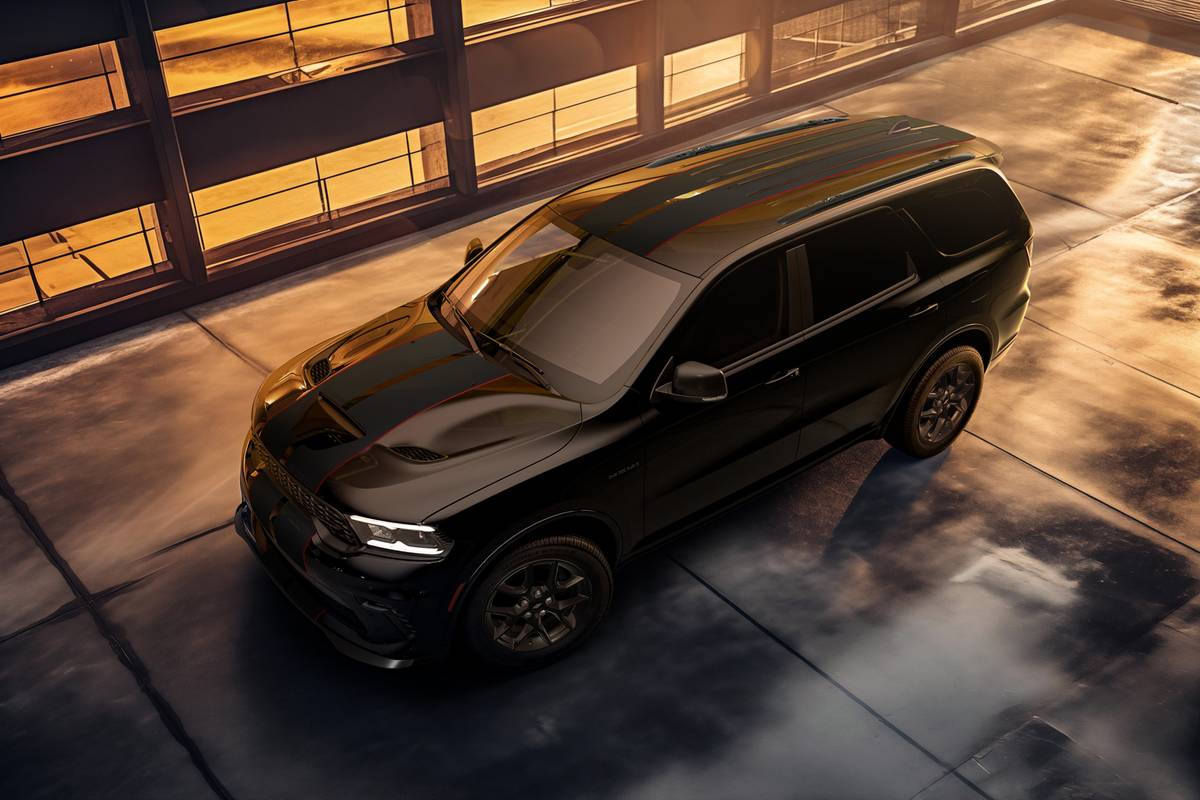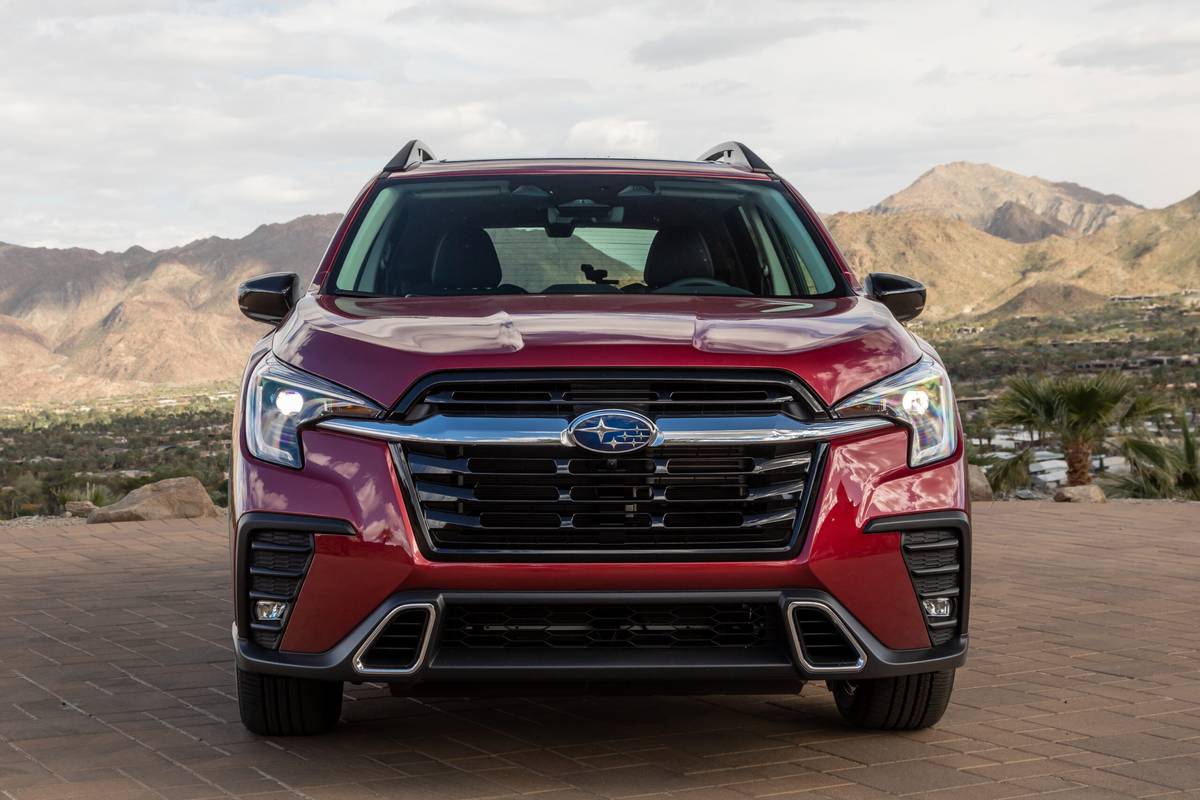AZCentral.com's view
The Nissan Xterra is a basic sort despite its fancy name and radical appearance.
A straight-up sport-utility vehicle based on a pickup truck, this is Nissan’s entry into the niche of compact, affordable SUVs. Shorter than Nissan’s mainstream Pathfinder, the newly minted Xterra treads its own path as a simple, rugged answer for those who want a real off-roader without paying the premium.
In a way, it moves back to where SUVs started from, as trucks with utility bodies. But it also looks ahead, one of the recent crop of compact SUVs to fill in the gap left by the original models, such as Pathfinder and the Toyota 4Runner, as they became more complex, more luxurious and considerably more expensive.
Building the Xterra directly off the Frontier was a clever way for Nissan designers to get into this range of SUVs without having to spend a bundle on development. They also turned out something quite different from the existing run of budget-priced SUVs.
Unlike niche rivals Toyota RAV4, Honda CR-V or Subaru Forester, all built on car platforms, the Xterra is very much a truck, built right on the chassis of the Frontier pickup, with old-style body-on-frame design and a straightforward leaf-spring rear suspension. As such, the ride may not be as sophisticated as the more-established SUVs, but on the rocky trails, it’s capable of going where the big boys go.
It’s available either as a two-wheel drive, with a limited-slip rear, or a full-fledged four-wheel drive, with shift-on-the-fly four-wheel drive and a high-low transfer case for crawling over the rough stuff. Either way, the ride height and appearance are the same, and both are protected with skid plates underneath.
Although Xterra may represent a distinctive new breed of sport-utility vehicle, it’s also along the same lines as the original Jeep Cherokee, which is still alive and selling, at about the same price range. Xterra is bigger than the Cherokee in every dimension, and its stylish body and trim are sure to have greater appeal to its young target audience.
The only thing out there that’s really akin to Xterra is the Isuzu Rodeo, which has continued as a value leader.
The base model Xterra can be had for about $17,000, with the full-boat SE model topping just $25,000 fully equipped. The two-wheel-drive test truck (this was a pre-production sample; a four-by-four wasn’t available) had every option on it except four-wheel drive.
With a 104-inch wheelbase, Xterra has decent size, with enough room inside for five regulation-size humans. The interior is simple, even stark in some respects, revealing the budget price. But it is comfortable and certainly workable.
The styling, apparently inspired by Land Rover design, looks adventurous and purposeful, and provoked quite a few favorable remarks. From its no-nonsense blacked-out grille and bumper assembly to the hump in the tailgate that houses a backpack or optional first-aid kit, the Xterra seems ready for business .
Topping it off is a macho-looking tubular aluminum roof rack, complete with a unique, aerodynamic basket that can be loaded with 30 pounds of gear.
Unfortunately, our test truck was paradoxically equipped with a sunroof that couldn’t possibly be opened because of the basket.
The kick-up behind the front doors is accentuated by the window styling and actually allows the rear seats to be a couple of inches higher than the front seats. This is called stadium seating, and makes the back seat a more pleasant place to be. It’s also related to the Xterra’s pickup origins, putting passengers and cargo deck where a pickup box would be.
The rear-seat cushions can be removed and the seat backs folded flush with the cargo bed.
As mentioned, the Xterra drives like a truck: some harshness and jostling, some shake and rebound, especially from the archaic leaf-spring rear. But all around, the Xterra is a kick to drive. Especially when you get it off pavement.
Our te st Xterra did really well on the relatively tame dirt road up from I-17 to Crown King. There are sharp elevation changes and a series of hairpin switchbacks, which the Xterra boogied through with style.
The tester was equipped with the 170-horse V-6 and automatic, not exactly a hot setup, but at least competent. The engine roars as it works to bring the Xterra up to highway speed, though once there, it cruises along quietly enough.
If I were buying one of these, I’d go for the stick shift to make better use of the engine’s available torque.
There’s also a budget-level four-cylinder engine, which generates 143 horsepower. That would probably be all right around town, but pretty frustrating on the open road.
A general fault of SUVs – mediocre gas mileage – weighs heavily on the Xterra. I seemed to be putting gas in this thing every time I turned around. Nineteen miles per gallon on the highway doesn’t really cut it.
Fun, quirky, a little bit screwy (that sunroof thing), the Xterra should be a certain hit for Nissan, which certainly could use one. Watch for the interesting crew-cab pickup, a similar concept to the Xterra but with a short pickup bed instead of an enclosed rear section.
2000 Nissan Xterra
Vehicle type: Five passenger, four-door sport-utility vehicle, rear/four-wheel drive. Base price: $23,549. Price as tested: $24,069. Engine: 3.3-liter V-6, 170 horsepower at 4,800 rpm, 200 pound-feet of torque at 2,800 rpm. Transmission: Four-speed automatic. Curb weight: 3,858 pounds. Wheelbase: 104.3 inches. EPA fuel economy: 16 city, 19 highway. Highs: Value pricing. Truck sturdiness. Distinctive style. Lows: Poor gas mileage. Sunroof conflict. Ride harshness.
Latest news



